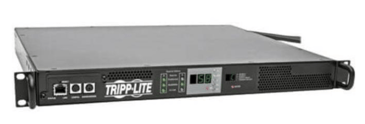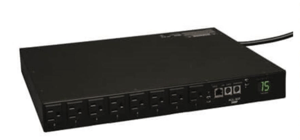 Bitcoin and Beyond
Bitcoin and Beyond
Bitcoin is the world's first cryptocurrency, described by its inventor, Satoshi Nakamoto, as "a new electronic cash system that uses a peer-to-peer network to prevent double-spending...completely decentralized with no server or central authority." Since Bitcoin's 2009 debut, more than 900 cryptocurrencies have flourished, including the popular Ethereum and Litecoin.
Cryptocurrencies can survive only due to miners, who confirm every transaction and add it to a blockchain. Miners are then rewarded with Bitcoins or other cryptocurrencies, but it can be difficult to keep up with the expenses involved in a successful mining operation. As you know, one must bring in more Bitcoins than one spends to be profitable!
An ASIC (Application-Specific Integrated Circuit) designed for mining is essential, but one can be very expensive, and it uses power in a big way - not just the servers, but also the cooling fans needed to combat the tremendous heat generated by the mining equipment.
Power consumption is usually the miner's biggest expense. It is believed electricity costs need to be kept under 11 cents per kilowatt-hour to maintain a profit.
Smart PDUs for Bitcoin Mining
A smart power distribution unit (or intelligent power distribution unit) can be a key factor in roping in electricity costs through its energy-efficient standards. For instance, a smart PDU, such as a monitored or switched model, connects to your Ethernet network via a standard RJ45 cable. Through its network interface, the intelligent PDU allows you to monitor your connected equipment from anywhere in the world, 24/7. You can also set up automated alerts to notify you of certain events.
Remote Current Monitoring
A smart PDU features a load meter that monitors how much power your mining equipment is using. This reduces guesswork about how to improve energy efficiency. Not only can you see current usage in real time, but you can also review data and event logs to monitor trends and improve planning.

When load levels become too high, the smart PDU can send you an alert and prevent costly downtime before it happens. You don't have to be physically present with your mining equipment to adjust your load.
A switched PDU can even monitor the amount of amps transmitted through each individual outlet, so you can shift your connected equipment around (if you happen to be on the premises) or shut down unused outlets remotely to save energy costs.
 Remote Outlet Switching and Rebooting
Remote Outlet Switching and Rebooting
Knowing how much current is being drawn by each outlet allows you to perform device-level optimization. Switching off unused outlets prevents unauthorized equipment from being added without your knowledge and avoids tripped circuit breakers (luckily, the breakers are easily resettable). Your server is probably going to be on all the time, but if you need to shut it down, it is easy to do so through a smart PDU.
Keeping Your Bitcoin Mining Equipment Safe and Dry
In addition to real-time remote monitoring of voltage, frequency and load levels, a smart PDU can also observe environmental levels near your mining equipment. You can place an environmental sensor that measures ambient temperature and humidity. It will send you an alarm if conditions exceed a certain limit. It can also monitor contact closure status of fire alarms, smoke detectors and security systems.
Tripp Lite presents a wide selection of smart PDUs with up to 45 outlets to keep your cryptocurrency mining operating at full tilt. Contact your local Accu-Tech representative to determine the best solution for your needs.


.png?width=58&height=58&name=X_logo_2023_(white).png)
